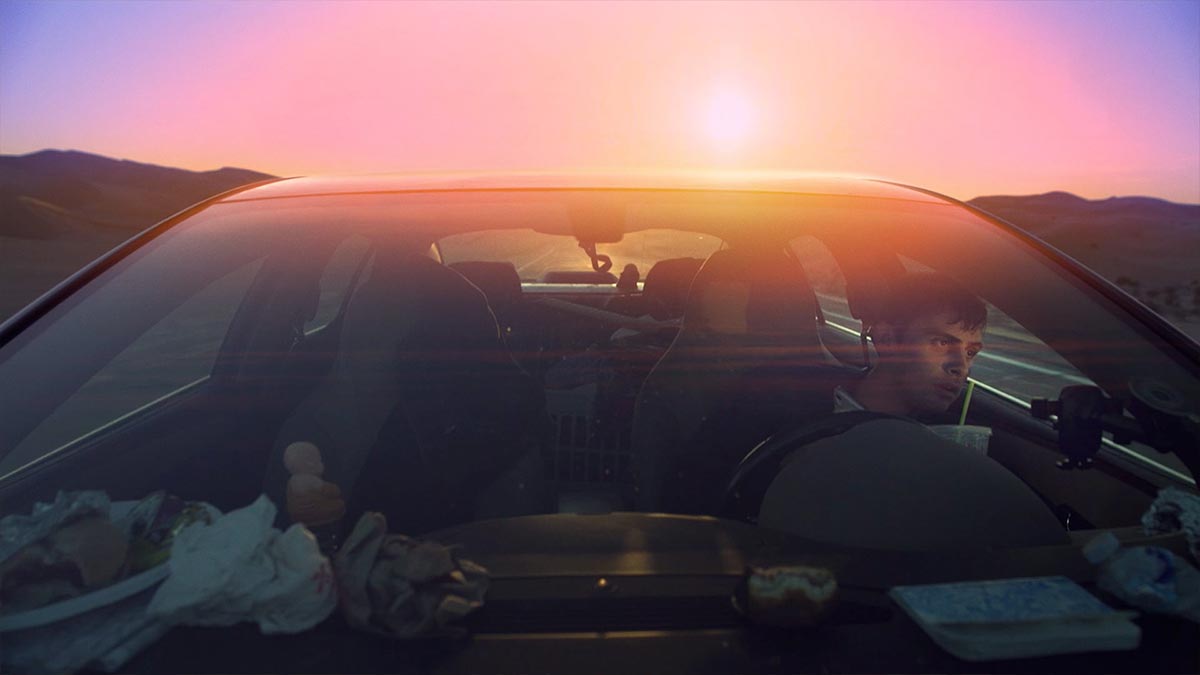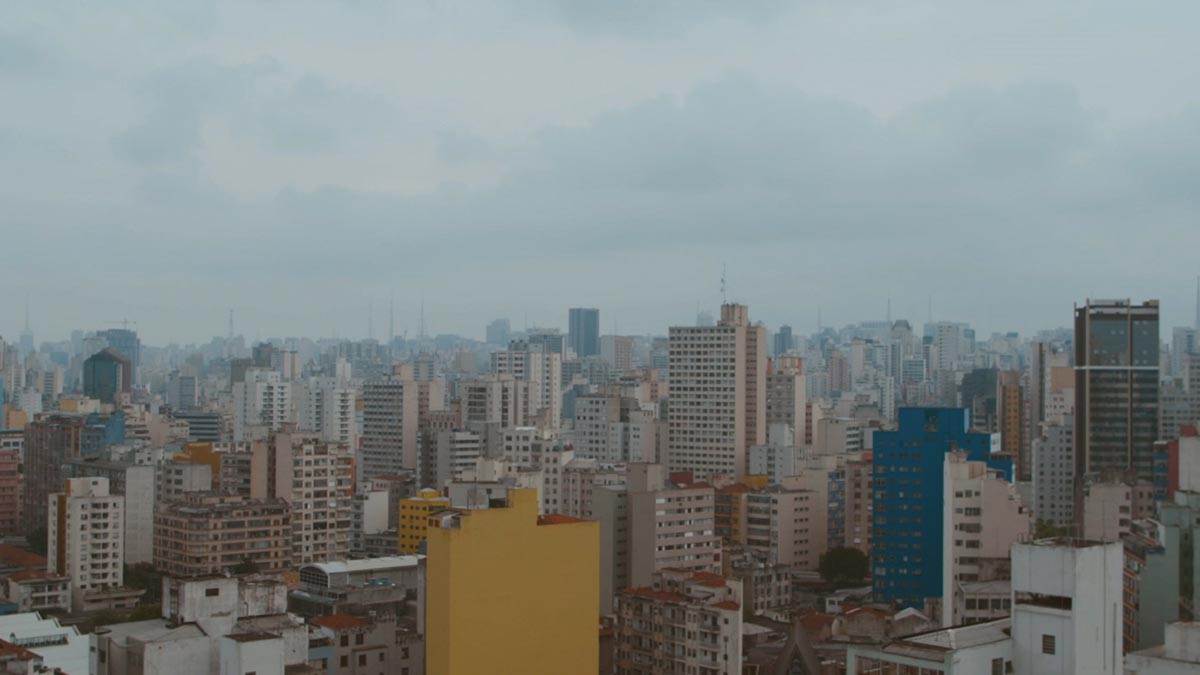Amidst a mandatory quarantine, a young woman living in isolation battles against her growing paranoia and deteriorating mental health as her fear of the outside world drives her deeper inwards.
Quarantine hit everyone hard – for many resurfacing mental health issues as the days and weeks went by. For many artists, the path to combat fear and boredom was to do what they do best: Create. That’s exactly how Meg Case and Brad Porter brought us WRATH (and how many other inspired our Quarantine Creatives). Conceived, written, and photographed during the mandatory quarantine beginning the 16th of March, 2020 in Michigan, WRATH is a short film about a young woman living in isolation battles against her growing paranoia. With her deteriorating mental health, her fear of the outside world drives her deeper inwards.
The threat of death was creeping closer into our own space
We believe that creativity promotes mental health. So during the quarantine, we converted our apartment into a film set for 2 months. Then into a post-house including a slew of instruments and recording equipment to create the score, edit and cut the picture, and design the soundtrack. Utilizing the limited resources of just the two of us, we wanted to both work out our own response to this world-shifting event as well as continue our practice as collaborative filmmakers. The result is our first co-directed film.
Often during making this film, we felt as though we were simply making a film about what we were thinking, feeling, and experiencing. Many of the scenarios we wrote were taken directly from our own personal lives living in that apartment. At times, it felt as though the threat of death was creeping closer into our own space and safety. Dying plants and vermi worms, dead baby birds, etc. All of these seemingly “bad” omens started closing in on us. And at some point, those fears either consume you or you consume them. So, our way to consume the fear was to express it visually as artists.
The Editing process
Our first rough cut came to 1 hour and 11 minutes. And while we liked each “moment” in that film we had constructed, we felt as though demanding (and sustaining) that amount of attention on this project was outside of our scope. We were also looking at a timeline that had nearly no sound (outside temp music tracks). So we continued to shave the piece down, bouncing between editing, sound design, and music. The final result is a 30 minute experimental piece that we were able to heavily influence with sound while maintaining some of the piercing moments or “feelings” of fear, isolation and uncertainty. While the score helped drive these moments, we also used color and death motifs to visually portray the character’s state of mind.

The film’s experimental soundtrack is one the most memorable and marking parts of the short. With eerie and distorting sounds which make up the film’s unique sense of development and deterioration. With such a large importance on the story, it’s incredible that the entire soundtrack was created entirely by themselves.
The Score
Creating the score for the film was an exciting experiment. We leaned into the limitations of our production equipment, space, time, and experience. We had one microphone (the boom used in production), an electric guitar with a busted amp, a rusted drum kit. And we had never really written or recorded music before.
But we were continually encouraged by references like Eraserhead, so we took our knowledge of sound design and essentially “music designed” the score. We kept listening to the brilliantly minimalist compositions of Mica Levi, particularly Monos and Under the Skin, recognizing that our abilities and skills lent best to creating layered tones with a hand-crafted aesthetic. So we found a cheap violin that we could play with. We grabbed the sounds we found in our apartment that felt like this film. One particular “instrument” that was very helpful in constructing the soundtrack was a small, clay, bird whistle my partner and I had found in Colombia on our travels together. In the film, it sets the stage for potential danger. Maybe an ominous warning, a feeling of being in the woods or the jungle and hearing an unfamiliar cry.
We stitched the music together, rewriting several pieces as the edit continued to develop. The process of developing the score felt like the last stage of writing the film. As we tried to center all our decisions around what the character was experiencing on-screen. And we’re proud that the final soundtrack reflects those feelings and experiences, the same feelings we were having during the quarantine ourselves.
The Sound of Wrath
During production, with a crew of two in an ever-shrinking space, we realized we had to sacrifice the quality of our live sound capture if we were going to finish shooting this project with our own sanity. So we drew inspiration from older European films and created nearly all the sounds heard during post-production (“foley”). But this challenge introduced a new opportunity to really consider just what sounds we wanted the audience to experience. We continued to ground our choices in the questions, “What is she feeling/thinking/experiencing right now? How can the audience hear what she’s hearing?”

Equipment
We shot the film on borrowed equipment as all local film productions came to a halt during the mandatory quarantine. We used a Red Dragon-X camera, but our lenses, the Sigma 18-35 & 50-100 zooms, were more critical to the aesthetic of Wrath as we kept referencing “early-zoom” films like Images (1972, Altman). When making a film with only two people, (while one of them is in front of the lens throughout), we were faced with a particular challenge: how do you move the frame to focus the audience’s attention without the use of a crew or equipment?
We knew we wanted to “ground” the image to convey the weight of the experiences we were feeling, so handheld/floppy camera moves felt inappropriate. It was important to us that Wrath felt like a piece of cinema, so we looked back to the moment in film history when zooms landed on the scene, and filmmakers were experimenting with this (at the time) new technology, and we found ourselves rediscovering the wonderful (and challenging!) benefits of designing a shot with a zoom lens.
The Goal of Creating Wrath
Meg Case and Brad Porter have been working independently in filmmaking for a collective 25 years, and they are now putting their heads together as a directing duo. WRATH demonstrates the kinds of projects and stories they are committed to telling: crafted, invitational, and engaging films.





